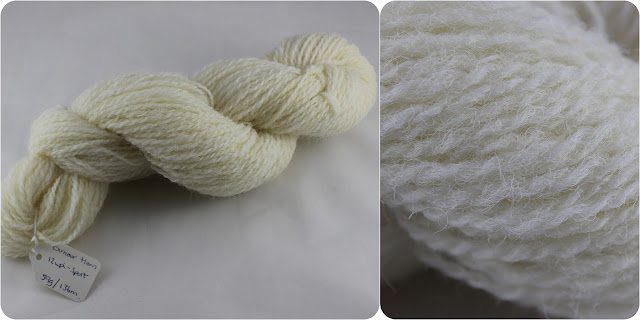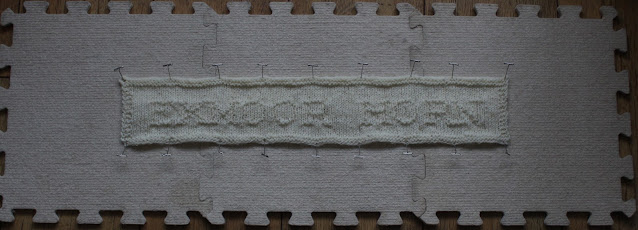The Dorset Horn is one of Britain's oldest breeds although its origins are a mystery. There are two lines of thinking. The first is that it was developed by crossbreeding Spanish Merinos with our native horned Welsh sheep whilst others believe it came from centuries of selection within the native sheep of southern England. Either way, they are spread across a large area of England and Wales and have also been exported around the world. A polled version has been developed by two different methods in Australia and the US and I have blogged about this separately here.
 |
| Dorset Horn ram |
 |
| Dorset Horn ewes |
The Dorset Horn has been documented from the seventeenth century and is highly prolific and can breed all year round, being the only British breed that does not have a seasonal estrus cycle, but a recurring estrus cycle. They regularly produce twins and triplets are not uncommon either. It can be bred earlier in the year than other breeds to produce lambs in time for the Christmas meat market or it can be bred more intensively to produce lambs three times over a two year period. Either way gives financial advantages to the farmer.
In the 1980's there were more than 100,000 registered breeding ewes in the UK. At the time of writing the Dorset Horn in is the Rare Breeds Survival Trust category 5: Minority (1500-3000) registered breeding ewes. That is a massive drop in numbers and most likely down to downturn in intensive farming practices to one that is more restorative and maybe also down to a preference for other breeds that have been introduced. They are usually found in the south west of England but there are specialist flocks throughout the UK.
The Dorset Horn is a medium sized sheep with a white face and characteristic pink nostrils. They are horned in both sexes with the ewe having smaller horns that just grow out and slightly curved whilst the rams have exceptional horns that grow out and curled.
They produce a medium size fleece that is very thick and weighs 2-4kg with a staple length of 2.5-6inch (6.5-12.5cm). The fleece is very white with an organised, regular and fine crimp pattern in both fibre and lock and it feels firm with good body. Micron counts are 26 to 33 so finer fleece can be used for next-to-skin items with coarser fleeces more suited to household textiles.
The fleece can be combed or carded, depending on the length of the fibres but can also be spun from the lock if you prefer. The longer length fleece with more open crimp pattern are easier to spin than those that are shorter with more Down-like qualities, which may require more experience to control. You can spin either woollen style or worsted style, it really is quite a versatile fleece. It will take dye very clearly.
I have found reference to the fact that there are some coloured Dorsets that have black fleece but it doesn't state whether these are polled or horned and are most likely from being cross bred at some point and so are probably not true Dorsets.
 |
Because to two samples are very slightly different shades what I did was to split the larger sample into two across the length to make two shorter lengths and the smaller sample I split along the length to make two thinner long lengths and paired one of each with each other twice. The lengths weren't quite the same so I had to stretch the smaller amount out a little bit to match the other length and then pre-draft the two together before spinning to even out the colour and any difference in texture/softness.




































